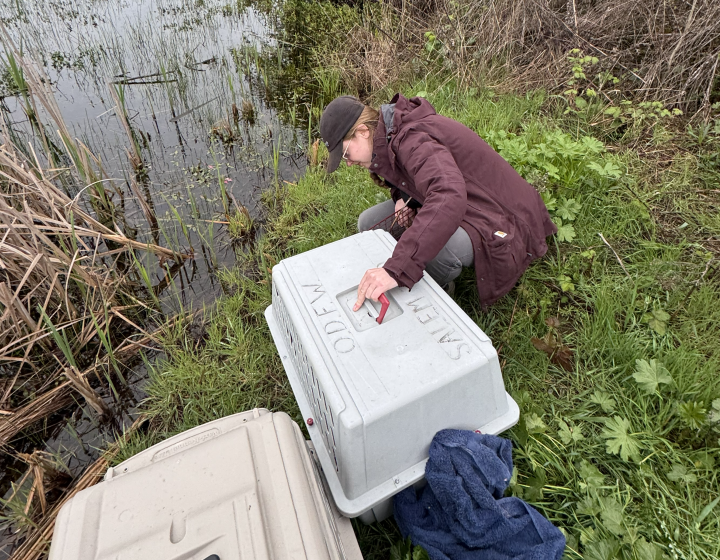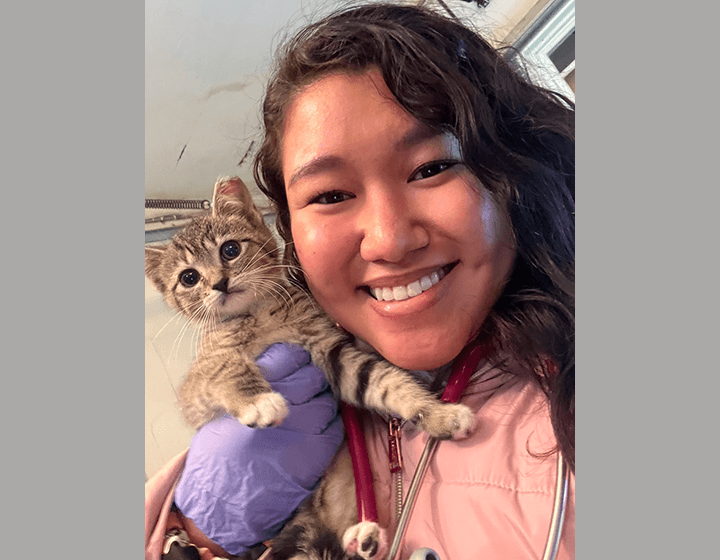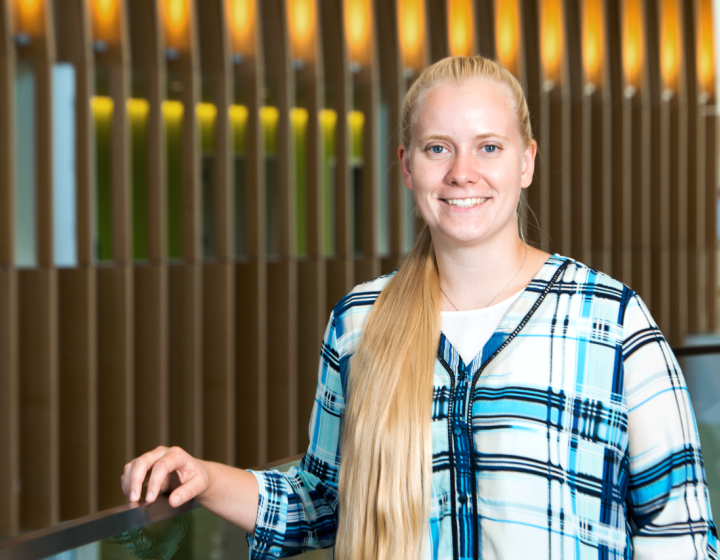Wild turkey patient has reason for gratitude
Thanksgiving may be a perilous time for turkeys, but one wild turkey has a lot to be grateful for.
The female turkey, badly injured after being attacked by a dog, is now recovering at Cornell’s Janet L. Swanson Wildlife Hospital. The wild bird is expected to make a full recovery and will be eventually released back into the wild.
The turkey was found in early November by a member of the public and brought to a licensed wildlife rehabilitator in Chadwicks, New York, who then sent the turkey to the Wildlife Hospital.
When the clinical team at the wildlife hospital assessed her, they found severe wounds on and around one of her legs, which required intensive surgical and medical management.
“She had many wounds all over her body, but the life-threatening wounds were on her left side,” said Service Chief Dr. Sara Childs-Sanford. “She has had three surgeries so far to remove nonviable tissue and begin to close parts of the wounds which are both deep and wide.
“The tissues are kept clean and protected with large bandages (which the turkey likes to try to remove) and deep tissue infection is being treated with antibiotics based on information gained from bacterial cultures.”
The injured turkey stayed strong despite the trauma. “She handled the treatment extremely well,” Childs-Sanford said. The clinical team is giving the turkey pain medications to help her stay comfortable.
“We have to medicate her twice a day, so we are lucky that she is easy to work with,” Childs-Sanford said. “She has maintained a great appetite throughout her stay, and in addition to her normal diet she is particularly fond of an occasional fruit salad, especially watermelon.”
When her wound is healed, she’ll return to the original wildlife rehabilitator to regrow all of her feathers, and to be acclimated to a larger area and to outdoor temperatures, Childs-Sanford said.
“When she is ready, she will be released in a suitable habitat near where she came from, where the presence of turkey flocks that she can join has been confirmed,” she said.
According to the Cornell Lab of Ornithology, wild turkeys eat nuts, buds and seeds as well as insects and other small animals. While they spend most of their time on the ground, the birds can and do fly, often roosting in the treetops at night. Females, like this patient, build nests on the ground and rear their broods of four to 17 chicks without the help of the males. The chicks travel in a family group with their mother, often joining with other groups of chicks and mothers.
European explorers in the early 1500s originally brought wild turkeys to North America from Mexico, where native people had domesticated the animals centuries before. A favorite dish on Americans’ dinner tables, wild turkeys became rare in the early 20th century.
However, the global population has rebounded to 7.8 million thanks to wild birds being transported to new areas and establishing populations in 49 states – an unparalleled success story in game management. The birds are popular among hunters, second to deer as the most sought-after game animal in the country.
“We are extremely thankful that Cornell is here to help thousands of wild animals in need each year, just like this turkey,” Childs-Sanford said. “We hope everyone’s Thanksgiving holiday is filled with joy and gratitude.”
This story also appears in the Cornell Chronicle.
Written by Lauren Cahoon Roberts
Photos by Carol Jennings/CVM





